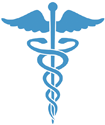The Media Is The Message: Strategies For Better Health Marketing Results
November 30, 2016
 In 1964, media visionary Marshall McLuhan coined the indelible phrase “the medium is the message,” all but predicting the Internet and how advances in communications technology would come to shape the symbiotic relationship between what is said and how. The ascendency of digital, social, and mobile has progressively empowered once-passive consumers, now equal partners in content selection, redistribution and even creation. The good news is that digital channels provide unprecedented opportunities for targeting and personalization; the bad news is audiences now control how and with what they engage, tuning in and out as they desire.
In 1964, media visionary Marshall McLuhan coined the indelible phrase “the medium is the message,” all but predicting the Internet and how advances in communications technology would come to shape the symbiotic relationship between what is said and how. The ascendency of digital, social, and mobile has progressively empowered once-passive consumers, now equal partners in content selection, redistribution and even creation. The good news is that digital channels provide unprecedented opportunities for targeting and personalization; the bad news is audiences now control how and with what they engage, tuning in and out as they desire.
Surprising New Challenges
Consider the 2016 Mobile Adblocking Report from PageFair: nearly 1 in 5 smartphone users already blocks ads, even while the practice has only begun to gain traction on mobile. And ad blocking aside, marketers struggle for attention as the shift from traditional budgets to digital goes through the roof. The Business Insider Spend Report reveals a remarkable 26.5% growth rate through 2020, with mobile leading the charge.
Audiences now consume information on-the-go, making context as vital as content. The proliferation of digital services, mobile apps and soon AI bots makes even programmatic campaigns increasingly challenging. With an astonishing one website for every seven people on earth, these platforms, networks and services serve as an essential “nervous system” allowing people to organize and make sense of an otherwise overwhelming galaxy of data.
Content preferences are also unwinding, new flavors digital video consumption overtaking live TV and attracting a proportionate share of ad spend. EMarketer suggests YouTube, Facebook, and Instagram will vie for dominance in this space.
Ways to Win
While scary for marketers, the crowded and still fragmenting landscape is a boon for savvy healthcare communicators who stay ahead. Cutting through the clutter and engaging audiences with the right content delivered in the right channel at the right place and time, media indeed becomes the message.
From Media Planning to Omnichannel Storytelling
Patients, caregivers, even healthcare professionals are all consumers, engaging with content through many of the same devices and channels. They live on their smartphones and tablets, engage with “apps as a service” and get their news and even product information through social networks. That inextricably links where they go with what they see and how they see it, demanding a radical new approach to how we create and distribute content. Media is no longer a way to promote content—media IS content.
We start by understanding our audiences and discovering their preferences for content consumption. We must “begin with the end in mind” to create content that’s eminently discoverable, repurposable, engaging and scalable across the new media ecosystem, transforming from static messaging to dynamic stories that encourage commenting and sharing. We must design with these fluid channels in mind to leverage every opportunity for integrated messaging that taps into vital flows and joins existing conversations.
From Driving Traffic to Engaging Audiences
Tactically, marketers must discard the antiquated model of building a brand.com and competing on unique visitors and time on site. Instead, content strategy, media planning and KPIs must reflect the reality of audience engagement on users’ terms. Today’s relevant content is contextual, highly personalized, often geo-located, social, and predominantly mobile. Audiences don’t come to us, we must go to them.
That means digital marketing, starting with SEO itself, must evolve to reflect the world of assets both on and off the website. Social media optimization, video, in-app and native advertising are must-haves. Moreover, audience “demos” have been rendered obsolete in favor of a bottom-up framework responding to the individual “Digital DNA” of empowered consumers. Your media team and partners can no longer be the last step in marketing planning, but a key conduit to the mind of the consumer – an enlightened partner seamlessly fusing channel and content strategies.
A New Kind of Media Partner
Is your media team an organic part of your content development and creative ideation? Are you meaningfully engaging your healthcare audiences, or talking at them? Is your goal to build awareness through dialogue, or drive traffic to clock metrics that don’t matter? Today’s healthcare consumer has the same expectations as those ordering on Amazon or summoning a ride with Uber—they demand immediacy, personalization, and utility. With media now the message, is your media team part of that message, or getting in the way of it?
By Marc Benjamin, Columnist
About the author: Marc Benjamin, chief executive officer, Convergence Point Media
Courtesy of mediapost





























